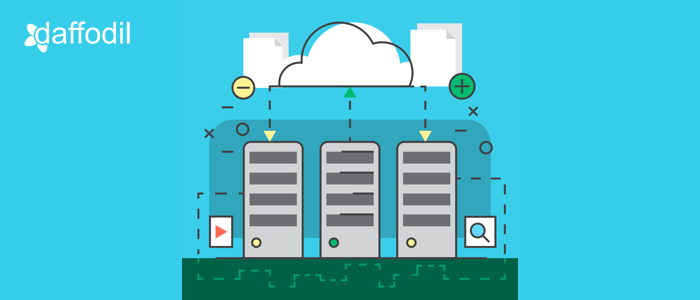
Infrastructure services consume a large part of IT budgets. It is therefore imperative for organizations to focus on cost and productivity of infra services to best utilize them.
Sourcing, procurement, and vendor management leaders are continuously striving to optimize the infrastructure in order to reduce costs, manage resources & their availability. The following segment discusses different ways an infrastructure for an application can be optimized on cloud.
Solution 1: Optimization of Existing Infra on Cloud
Moving an existing infrastructure on cloud have a number of benefits. For example:
- An infra on cloud can auto-scale to support fluctuating workloads.
- It allows organizations to choose public, private, or hybrid storage offerings according to security or other business considerations.
- Cloud infra enables organizations to have a level of control over the infra with as-a-service options (which generally includes Software as a Service (SaaS), Platform as a Service (PaaS), and Infrastructure as a Service (IaaS)).
- A number of pre-built tools and features can be accessed to build a solution for optimizing the infra.
With so many cost-saving and productivity-improving advantages of cloud, we always recommend our clients to move their existing on-premise infra on cloud for optimization.
For this, we start with an assessment of existing resource utilization. This is either a manual process or done via tools in order to figure out the “under-utilized” and “over-utilized” resources.
Action Items:
- Make a long-term commitment for over-utilized resources: If a website is active 24×7×365 and is receiving constant traffic, then it's better to opt for reserved instances rather than on-demand pricing. You can opt for Amazon EC2 Reserved Instances (R1) that provide a significant discount (up to 75%) as compared to on-demand pricing models. More is the time for which the instances are reserved, more would be the discount. For example: Reserving instances for a website can help to save up to 30% (for 1-year time span), 50% (for 2-year time span), 0r 70% (for 5-year time span), approximately.
- Scheduling or Auto-scaling of under-utilized resources: Imagine a website having 80% usage during peak hours and only 5% in the meanwhile. In such scenarios, the resources (say 4CPUs, 16GB RAM, ...and so on) at peak hours can be scheduled to drop down to 1 CPU, 2GB RAM, ...and so on. Such scheduling of resources can reduce the overall cost by 50%.
Solution 2: Architectural Changes
A software architecture defines and structures a solution in a way that it meets all the technical, operational and business requirements. From monolithic to SOA to microservices, software architectures have evolved over time.
Depending upon the application type, its scalability, features & functionalities, a relevant architecture can be adopted. Here is a guide for you to choose between monolithic and microservices architecture for eCommerce application development.
Action Items:
- Monolithic to Microservices Architecture: For changes at architecture level in legacy applications, we start with an assessment of the application and its technology stack. Microservices has a containerized architecture and enable developers to create make the most of different technologies to create services. By availing the benefits that Microservices offer, there can be a cost saving of 30-60% in a software development project.
- Microservices + Serverless Architecture: A serverless architecture or Function as a Service (FaaS) is a software design pattern for building and running applications/services without having to manage the infrastructure. While the application still runs on the server, it is managed by cloud computing services like AWS, Google Cloud Platform (GCP), etc. With a serverless architecture, there is no manual intervention to maintain and scale applications, databases, and storage systems.
Developing applications with serverless architecture helps to curb operational costs, requires no-upfront capacity, and requires no environment configuration. To understand this better, take the example of AWS Lambda. It's a compute service that allows running the code without provisioning or managing servers. This pay-as-you-go service by AWS executes the code only when needed and scales as the demand strikes (from a few requests per day to thousands per second).
Infrastructure Optimization on Cloud: Getting Started
If optimizing an existing infra or designing a new one is on your mind, then you can get started with expert technical guidance. Our cloud consultation service will connect you to our cloud expert Gaurav Sharma, who will guide you through the best practices for infrastructure optimization for your application.




